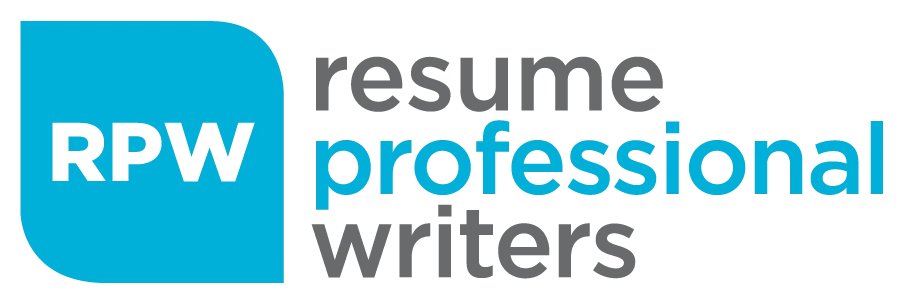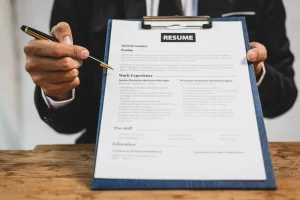A staggering 85% of employers use Applicant Tracking Systems (ATS) to screen resumes before they reach human eyes. The numbers paint an even bleaker picture – 88% of employers think these systems regularly screen out qualified candidates.
Your resume creates the first impression on potential employers and shapes your entire job search journey. Modern technology hasn’t changed this fact – resumes still remain the most crucial part of job applications. The strategies that worked a few years ago might not help you get past today’s digital screening tools.
The good news? Creating a standout resume in 2026 doesn’t need fancy designs or creative tricks. Success comes from understanding modern screening tools and what employers want to see. In this piece, you’ll learn exactly how to write a resume that beats automated systems and catches hiring managers’ attention. We’ll show you everything from picking the right format to showcasing your skills that match specific jobs. These practical strategies will revolutionize your job applications.

Understand What Makes a Resume Work in 2026
Resumes continue to evolve in 2026. They adapt to new technologies while playing a central role in hiring. Today’s effective resume needs to meet hiring manager expectations and work well with application evaluation systems.
Why resumes still matter in a digital-first world
Modern technology hasn’t replaced resumes – they remain vital to job applications. These documents work as marketing tools that show a candidate’s adaptability, digital skills, and personal brand. A well-crafted resume helps separate candidates from their competition by offering a clear snapshot of their skills, education, and experience.
Recruiters agree that resumes aren’t everything in a job search, but they’re still “a critical way to catch the attention of automated job-application systems or impress a hiring manager”. Your resume starts the conversation that leads to that vital first meeting with employers.
What hiring managers look for today
Hiring managers in 2026 have moved away from focusing on credentials. They now look at what you can deliver. The question isn’t about your past employers or education – it’s “What results can you deliver, and what have you delivered in the past?”
Hiring managers want to see:
- Quantifiable achievements instead of job duties – 75% look for measurable results in work experience
- Skills demonstration rather than credentials – JPMorgan shows this trend with 70% of experienced hire roles not requiring degrees
- Impact statements showing how candidates made companies “better, faster, cheaper, more efficient”
- Digital literacy skills, whatever the industry
- Remote work capabilities as hybrid work becomes normal
This change runs deep – 81% of companies now hire based on skills, up from 56% in 2022. So your chances of getting hired in 2026 depend on showing the skills employers need right now.
How ATS and AI are changing resume screening
The digital world of resume screening looks completely different now. About 90% of Fortune 500 companies use Applicant Tracking Systems, and 83% plan to use AI for application reviews in 2026.
ATS systems do more than match keywords. Modern AI tools use natural language processing to understand context and provide detailed resume analysis. These systems look at:
- Context and relevance beyond exact keyword matches
- Quantifiable achievements that prove performance
- Consistent formatting that’s well-laid-out
- Skills alignment with specific job needs
Job posts with 201-400 words get the most applications (8-8.5%), while shorter ones under 200 words attract about 4.5%. Recruiters spend around 17 seconds reviewing resumes that pass screening, not the commonly quoted 7 seconds.
Job seekers should know these digital gatekeepers well. About 88% of employers think ATS systems might reject qualified candidates because of poor formatting or missing keywords.
Step-by-Step: How to Write a Resume That Gets Interviews
Your resume must be precise and strategic to land interviews. Hiring managers spend only 17 seconds reviewing resumes that pass the original screening. Your document should catch their attention right away. Here’s how you can craft a resume that creates opportunities.
1. Start with a strong resume summary or objective
A powerful summary or objective statement should appear at the top of your resume. Your resume summary should express your biggest professional achievements and most valuable skills. This works best for candidates with relevant experience. Experienced professionals should focus their summary statement on the company’s needs rather than their own, answering “what can I do for you?”.
Recent graduates or career changers benefit more from a resume objective that connects career goals to the position. These guidelines help create effective statements:
- Keep it concise—one or two sentences for an objective, a short paragraph for a summary
- Include your job title, years of experience, and key skills
- Highlight measurable achievements where possible
- Place it at the top of your resume for maximum visibility
Note that 41% of hiring managers look at skills first, so your most relevant qualifications should appear in this section.
2. List your work experience with measurable results
Results matter more than responsibilities in previous roles. Hiring managers want proof of your capabilities through past accomplishments.
Numbers make achievements more concrete:
- Show improvement with percentages (e.g., “reduced employee onboarding time by 15%”)
- Add dollar amounts for revenue generation or cost savings
- Show efficiency improvements with time-based metrics
- Describe your contribution scope (e.g., team size, budget managed)
Each accomplishment should follow this pattern: Action + Task + Result. “Managed territory of 45 clients, increasing revenue by 23% within six months” works better than “responsible for managing sales”.
3. Add your education and certifications
Recent graduates should put education before work experience. Experienced professionals should list it after their professional history.
Educational entries need:
- Name of institution
- Degree type
- Year of graduation (or expected graduation)
- Relevant coursework or academic achievements
- GPA is above 3.4
A separate “Certifications” section showcases specialized expertise and dedication to professional standards. List each certification with:
- Full certification name (with abbreviation in parentheses)
- Issuing organization
- Date obtained (and expiration date if applicable)
Ongoing certifications should show “In Progress” next to the name and “Expected” before the completion date.
4. Include relevant hard and soft skills for resume
Skills most relevant to the position should stand out. Look through the job posting’s “requirements,” “education,” or “desired skills” sections to identify required skills.
Hard skills (technical, measurable abilities) might include:
- Database management
- Programming languages
- Marketing campaign management
- Statistical analysis
- User interface design
Employers value these soft skills (interpersonal abilities):
- Problem-solving
- Effective communication
- Teamwork
- Adaptability
- Critical thinking
Your work experience section should demonstrate these skills rather than just listing them. This proves you actually have these capabilities.
5. Use action verbs and avoid generic phrases
Strong action verbs at the start of each bullet point showcase your accomplishments better than generic terms.
Effective action verbs include:
- Management experience: coordinated, directed, supervised, oversaw
- Financial skills: budgeted, calculated, projected, analyzed
- Communication: negotiated, persuaded, presented, authored
- Achievement: achieved, improved, reduced, transformed
Skip these overused phrases that weaken impact:
- “Team player” or “hard worker”
- “Results-driven” or “detail-oriented”
- “Strategic thinker” or “go-getter”
- “Think outside the box”
These common phrases won’t help you stand out. Specific examples with measurable achievements tell your story better.
Choose the Right Resume Format for Your Career Stage
Your choice of resume format can make a big difference in getting that interview call. Each format serves a unique purpose and shows different parts of your work background.
Chronological vs. Functional vs. Combination Formats
The chronological resume format lists your work history backward, starting with your current job. Recruiters prefer this classic format because it creates a clear picture of your career growth. You’ll need to add your contact details, a summary statement, skills section, work experience, and education.
The functional resume format puts your skills front and center instead of your work timeline. Rather than listing each job, it focuses on your core strengths and shows how you’ve used these skills. The format starts with your professional skills and ends with a short work history.
A combination (or hybrid) resume takes the best of both worlds. It opens with your key skills and follows up with a chronological work history. This lets you showcase your abilities while giving recruiters the job timeline they want to see.
When to use each resume format
Your career path should guide your format choice. The chronological format works great if you have steady employment and clear career growth. Resume experts say, “For most professionals, the chronological format should be the default”. Recruiters can quickly see how your career has grown.
The functional format fits best for:
- Career changers whose old jobs don’t line up with new goals
- People with gaps in their work history
- Recent graduates just starting out
- Those who want to focus on transferable skills
The combination format offers a middle path. It works well for people with diverse careers or professionals who need to show both their skills and work dates.
Resume examples for different industries
Each industry likes certain resume styles. Banks, law firms, and healthcare companies usually want chronological formats that show steady career progress. Creative fields like marketing, design, or tech often welcome modern layouts with colors and design elements that show new ideas.
Tech jobs that need specific skills benefit from the combination format. Engineering resumes work well with this style because it shows both project know-how and career growth.
Pick a resume format that matches your career stage and what your industry expects. This will help present your qualifications in the best way possible.
Tailor Your Resume for Every Job You Apply To
The job market today is highly competitive. Your chances of getting interviews drop substantially when you send the same generic resume to multiple openings. Companies quickly dismiss one-size-fits-all resumes and prefer documents that match their specific requirements.
How to match your resume to the job description
The best way to customize your resume starts with a full analysis of the job posting. Look for key phrases, qualifications, and buzzwords that appear prominent. The first few bullet points in each section usually show what matters most to the company.
Your next step is to align these priorities with your relevant experiences. Recruiters look at your employment history section right away, so you should:
- Put the most relevant experience bullets at the top of each position
- Use the exact words from the job description
- Highlight duties and accomplishments that relate to the target role
- Add numbers to measure your results and show your effect
Using keywords to pass ATS filters
The data shows 99.7% of recruiters use filters to find candidates. They filter by skills (76.4%), education (59.7%), and job title (55.3%). Here’s how to optimize your resume for these Applicant Tracking Systems:
- Match exact keywords from the job posting since ATS doesn’t recognize similar words
- Add keywords naturally in your summary, skills section, and experience bullets
- Use the exact job title – this makes you 10.6 times more likely to get an interview
- Don’t overload with keywords as it triggers rejection
- Make sure keywords fit naturally in sentences
Creating a master resume for faster customization
Think of a master resume as your career’s complete record – like an “external memory bank” that lists all work experience, skills, education, and achievements. Unlike targeted resumes that stay within 1-2 pages, your master version can be longer.
This approach helps you:
- Pull relevant content quickly for each application
- Keep your references and portfolio links current
- Spot potential skill gaps for target roles
- Customize faster while keeping your information consistent
A well-customized resume shows you care about the organization’s mission, beyond just the job requirements.
Modern Resume Tools and Trends You Should Know
Modern job seekers need more than traditional resumes to secure interviews in today’s digital world. The competitive job market of 2026 rewards candidates who embrace current tools and trends.
Using AI resume builders and resume genius tools
AI-powered resume tools have changed how people create job applications. Companies of all sizes now employ Applicant Tracking Systems (ATS) to filter resumes. ATS-friendly formatting has become essential rather than optional. These intelligent systems look for relevant keywords, proper structure, and appropriate formatting before any human sees the applications.
AI resume builders solve these challenges by:
- Analyzing data to suggest industry-specific keywords and phrases
- Offering templates that pass ATS filters
- Providing customized content recommendations based on job descriptions
- Formatting documents for maximum readability
Tools like Resume Genius, Kickresume, and Enhancv use AI algorithms to help candidates create compelling resumes quickly. Some platforms also review existing resumes and suggest ways to improve visibility with recruiters.
Video resumes and online portfolios
Video resumes are becoming popular across industries. These brief recordings (ideally 1.5-2 minutes) show communication skills and personality traits that paper resumes can’t capture.
Digital portfolios have also become valuable assets, especially in:
- Creative fields
- Software development
- Marketing and communications
These interactive collections display projects, writing samples, and technical skills better than traditional resumes. Adding links to online portfolios within standard resumes helps hiring managers explore candidates’ work without overwhelming application documents.
Read Also:
🎥 Video Resume Script Service: Present Your Story with Confidence and Impact
Stand out in the job market with a professionally written video resume script that highlights your value and personality in under two minutes.
Optimizing your LinkedIn and digital presence
Social media platforms, especially LinkedIn, are used by over 90% of recruiters to find and review candidates. A resilient online presence is vital for job seekers.
Recruiters in 2026 often compare resumes with online profiles, making it important to arrange these platforms consistently. A professional digital presence works as an extended showcase of qualifications that adds to traditional application materials.
To increase visibility:
- Make your LinkedIn profile match your resume while adding more detail
- Take part in industry discussions
- Add hyperlinks to LinkedIn profiles or professional portfolios in resume headers
- Show intellectual influence through articles or contributions to professional forums
Your online presence shapes recruiters’ first impression and can lead to opportunities beyond local job markets.
Read Also:
💼 LinkedIn Profile Writing Service: Boost Your Visibility with a Powerful Professional Brand
Learn how a professionally written LinkedIn profile can elevate your online presence and attract the right career opportunities.
Your Next Career Step: Build a Resume That Opens Doors
A strong resume can be your ticket to career growth and unlock opportunities you might miss otherwise. Your resume plays a vital role in job applications, but you need the right approach to make it work.
Think of your resume as a brief yet informative overview of your skills, education, and experience. While it won’t get you the job by itself, a compelling resume will boost your interview chances by a lot. You need to focus on both content and presentation to create this crucial document.
Resume language should be:
- Specific rather than general
- Active rather than passive
- Written to express, not impress
- Clear and direct, not flowery
- Fact-based with quantified achievements
- Easy to scan quickly
These common resume mistakes will hurt your chances right away:
- Spelling and grammar errors
- Missing contact information
- Passive language instead of action verbs
- Poor organization and formatting
- Failing to demonstrate results
- Excessive length
You should customize your resume for each job you want. This shows you’re genuinely interested in the role and helps you clear ATS screening. Keep your formatting consistent, balance white space well, and list details in reverse chronological order within sections.
The resume trends for 2026 point toward minimalist design, keyword optimization, and strong personal branding. Add links to your LinkedIn profile or online portfolio so hiring managers can see your full qualifications.
Your resume should showcase your best qualities and separate you from other candidates. You’ll create a powerful tool that opens doors to interviews and new opportunities when you use these guidelines and keep updating your resume with new skills and achievements.
Take the Next Step Toward Interview Success
Ready to turn your resume into a powerful career asset? Let our expert resume writers help you craft a job-winning resume tailored to beat ATS filters and impress hiring managers. Whether you’re changing careers, reentering the workforce, or aiming for that next big role, professional guidance can make the difference between silence and interview calls. Start your success story today.








